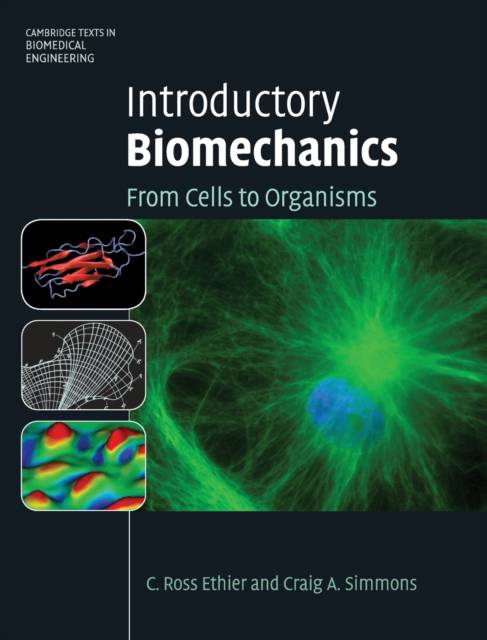
En raison d'une grêve chez bpost, votre commande pourrait être retardée. Vous avez besoin d’un livre rapidement ? Nos magasins vous accueillent à bras ouverts !
- Retrait gratuit dans votre magasin Club
- 7.000.000 titres dans notre catalogue
- Payer en toute sécurité
- Toujours un magasin près de chez vous
En raison de la grêve chez bpost, votre commande pourrait être retardée. Vous avez besoin d’un livre rapidement ? Nos magasins vous accueillent à bras ouverts !
- Retrait gratuit dans votre magasin Club
- 7.000.0000 titres dans notre catalogue
- Payer en toute sécurité
- Toujours un magasin près de chez vous
94,95 €
+ 189 points
Description
Introductory Biomechanics is a new, integrated text written specifically for engineering students. It provides a broad overview of this important branch of the rapidly growing field of bioengineering. A wide selection of topics is presented, ranging from the mechanics of single cells to the dynamics of human movement. No prior biological knowledge is assumed and in each chapter, the relevant anatomy and physiology are first described. The biological system is then analyzed from a mechanical viewpoint by reducing it to its essential elements, using the laws of mechanics and then tying mechanical insights back to biological function. This integrated approach provides students with a deeper understanding of both the mechanics and the biology than from qualitative study alone. The text is supported by a wealth of illustrations, tables and examples, a large selection of suitable problems and hundreds of current references, making it an essential textbook for any biomechanics course. C. Ross Ethier is a professor of Mechanical and Industrial Engineering, the Canada Research Chair in Computational Mechanics, and the Director of the Institute of Biomaterials and Biomedical Engineering at the University of Toronto, with cross-appointment to the Department of Ophthalmology & Vision Sciences. His research focuses on biomechanical factors in glaucoma and blood flow and mass transfer in the large arteries. He has taught biomechanics for over ten years. Craig A. Simmons is the Canada Research Chair in Mechanobiology and an assistant professor of Mechanical and Industrial Engineering at the University of Toronto, with cross-appointments to the Institute of Biomaterials and Biomedical Engineering and the Faculty of Dentistry. His research interests include cell and tissue biomechanics and cell mechanobiology, particularly as it relates to tissue engineering and heart valve disease.
Spécifications
Parties prenantes
- Auteur(s) :
- Editeur:
Contenu
- Nombre de pages :
- 524
- Langue:
- Anglais
- Collection :
Caractéristiques
- EAN:
- 9780521841122
- Date de parution :
- 12-03-07
- Format:
- Livre relié
- Format numérique:
- Ongenaaid / garenloos gebonden
- Dimensions :
- 193 mm x 246 mm
- Poids :
- 1678 g

Les avis
Nous publions uniquement les avis qui respectent les conditions requises. Consultez nos conditions pour les avis.






